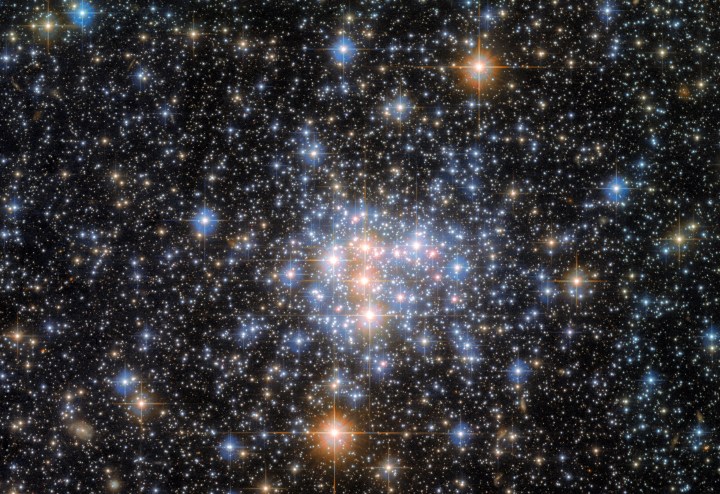Each week researchers from the Hubble Space Telescope share an image they have captured of a particular object or region in space. This week’s Hubble image shows the Small Magellanic Cloud, or SMC, which is a satellite galaxy to our Milky Way.
The SMC is tiny compared to our galaxy, at just 7,000 light-years across compared to the approximately 100,000 light-years of the Milky Way, making it a type called a dwarf galaxy. It is also one of our nearest neighbors and a satellite galaxy of the Milky Way, meaning it is gravitationally bound to our galaxy. It can be seen with the naked eye, along with its companion the Large Magellanic Cloud, mostly visible from the southern hemisphere.

This image is just a small part of the SMC. “The Small Magellanic Cloud contains hundreds of millions of stars, but this image focuses on just a small fraction of them,” Hubble scientists write. “These stars comprise the open cluster NGC 376, which has a total mass of only about 3,400 times that of the Sun. Open clusters, as the name suggests, are loosely bound and sparsely populated.”
The SMC was the site of one of the most important discoveries in the history of astronomy, as pioneer Henrietta Leavitt observed a type of variable star called a Cepheid variable there. Leavitt showed that these stars have a set relationship between how brightly they glow and how often they pulse, allowing researchers to tell how bright a star would be based on its pulsing. By comparing a Cepheid variable’s luminosity with its observed brightness, researchers can accurately tell how far away it is. This means these stars can be used as distance markers, allowing astronomers to gauge distances in the universe.
Editors' Recommendations
- Celebrate Hubble’s 34th birthday with this gorgeous nebula image
- Hubble spots a massive star forming amid clouds of dust and gas
- Hubble images a pair of galaxies caught in the process of merging
- Webb and Hubble work together to image the Christmas Tree Galaxy Cluster
- Hubble captures a stunning ultraviolet image of Jupiter




